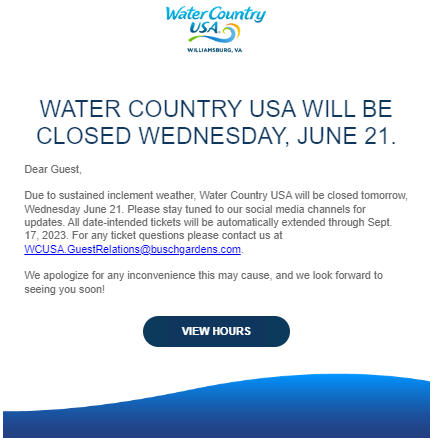
For any successful business, client management is not an option — it’s a priority. McKinsey & Company found that across industries, customer experience leaders experience double the growth compared to their peers.
Client management refers to managing customer and client relationships for a business organization. Successful client management results in happy, loyal customers who return to the company whenever they need its products or services.
Typically, the people in charge of client management within an organization work in sales, customer service, or marketing roles. Client managers oversee, build, develop, and strengthen relationships with customers. They design and implement customer relationship development strategies to connect with the organization’s clients over the long term.
With effective client management, you not only ensure your clients are happy but also deepen those relationships to help your business grow.
The importance of effective client management
Client management is imperative for any company that wants to build a reliable, dedicated customer base. When you develop strong relationships with clients, they’re less likely to turn to your competitors when they need products or services you sell. Instead, they’ll stick with your organization, boosting your revenue and allowing you to meet financial objectives.
Satisfied customers will tell their friends, colleagues, and family about their experience with your organization, getting you more clients and generating additional sales. Plus, you’ll develop a positive reputation within your industry.
Core principles of client management
To develop solid client relationships, you must first understand your customer’s needs. When you know what your clients want from your organization, you can develop a comprehensive management strategy.
Setting realistic expectations
Not all clients will stick with your company for the long term. That’s true for any organization. There are some aspects of a customer’s decision-making process you can’t control, no matter how hard you work to strengthen relationships or meet a client’s needs.
For instance, assume you sell toddler clothing through an e-commerce website. Your clients are adults with young children. Once their kids outgrow the clothes you sell, they’ll stop buying from you. They no longer require your products, but that doesn’t mean they don’t appreciate your business. With effective client management, however, you can get them to refer your business to other new parents they know.
It’s essential to set an attainable goal for your client retention and management efforts. While 100% retention probably isn’t realistic, 50% might be. Reasonable expectations depend on your business model and industry. You might set initial benchmarks and work toward meeting them.
Value of honesty and transparency
Customers value honesty and authenticity. A Harris Poll survey found that 82% of customers want a brand’s values to match theirs.
It’s essential to reach them where it counts — in their minds and hearts. Try to avoid spammy messages and cold calls that frustrate buyers and turn them away from your company. Instead, keep their needs in mind and ensure your messages provide something they value, like:
- Helpful information
- Enjoyable content
- Product updates
- Company news
- Sales or discount coupons
Consistent and fast communication
Whenever a customer contacts your company directly, they usually have a pressing need they want you to address. Have a system in place so you can always respond to customer inquiries quickly and efficiently. For example, you might set up a dedicated customer service line or a team to reply to incoming client emails. Promptly responding to client requests will help you sustain customer relationships.
Understanding your client’s needs
Think about prior positive experiences with your customers. What did you provide them that made them happy with their purchase? Did they love the products or services you offered? Did you help them through the buying process, ensuring they found a suitable item to address their needs? Were your follow-ups sincere and helpful?
When you know what your customers want, it’s easier to identify ways to meet their needs. Of course, every client is different, so consider segmenting your customer base according to various factors, like:
- Demographics
- Location
- Interests
- Purchase history
That way, you can identify differing customer needs across your audience.
Read now: Best Practices for Email List Segmentation
Building trust with your clients
Find ways to demonstrate your company’s trustworthiness and credibility. Doing so will make establishing connections with your customers more straightforward, which you can build on over time. For instance, you might showcase prior customer testimonials or reviews to show how much previous clients enjoyed your products. When new clients see that others enjoy your services, they’ll be more likely to trust what you offer.
Measuring success in client management
Establish key productivity indicators (KPIs) to evaluate your client management efforts. Some examples of CRM metrics include:
- Email click-through rates
- Sales conversions
- Customer service ratings
- Funnel drop-off rates
You can set benchmark client management KPIs and track your results against your goals.
Focusing on long-term goals
While accomplishing short-term objectives is great, it’s also a good idea to set some long-term goals for your client management efforts. Define what’s important to your company and work to meet your target over the next year, five years, or ten years. For example, you might aim to increase client retention by 10% or attain a number of five-star customer reviews.
Read now: Achievable Goal-Setting Tips for Marketing Agencies
Client management skills
Certain qualities can help you achieve your customer management objectives.
Universal skills for successful client management skills
No matter what industry your company is in, there are a few ubiquitous traits that are beneficial for client management.
Active listening and responsiveness
Customers want you to hear and understand their needs. Listen to what they tell you rather than assuming you know what they want. Take notes of their concerns and pain points, and truly engage in the conversation. Ask questions if you’re unsure of what they’re saying.
Keep in mind that when a customer communicates directly with your company, they expect a quick response. Set processes in place to answer client phone calls, emails, and other messages within a short timeframe.
Problem-solving and creativity
When addressing a customer’s inquiries, put your problem-solving and creativity skills to work. Understand their issue and identify ways to resolve it without friction.
For instance, say your client placed an order with your local shop, but it arrived late. They call you and express their dissatisfaction. If your store is within a reasonable distance, you could assign a team member to hand-deliver the item immediately and provide them a gift or special discount for the inconvenience. That would help you repair any damage to your client relationship and encourage them to return next time they need your products.
Negotiation and patience
Not every customer encounter will be pleasant. Sometimes, clients may express frustration, make impolite comments, or treat you poorly despite your best efforts to meet their needs. If you’re dealing with a difficult customer, maintain your cool and keep your client management goals in mind. Try to negotiate with them or explain your policies so they understand.
Strategies for managing client relationships
Here are a few ways you can build and develop strong client relationships.
Strategic communication and follow-ups
Any time a customer browses your store or inquires about your services, use it as an opportunity to communicate with them. If they’ve signed up for your email or SMS subscription list, send them a quick follow-up message encouraging them to take further action or letting them know you’re here for them if they have additional inquiries.
For example, look at this welcome email from The Washington Post. It encourages the subscriber to sign up for daily news updates and follow favorite columns to stay on top of what’s going on in the world.

Read now: How to Write a Welcome Email: A Comprehensive Guide
Methods to collect and act on client feedback
Once a client purchases from you, it’s crucial to get their feedback. Customer insights help you understand where you’re meeting client needs and where you can improve.
Take a look at this email from Adobe. It asks the recipient to complete a short survey about their creative and digital activities to help Adobe improve its current product and services. In exchange for completing the survey, the recipient gets entered into a drawing for a gift card. The email accomplishes two things: it helps Adobe learn more about customer needs and offers clients a potential reward for providing feedback.

Read now: Customer Feedback: How to Get It and How to Use It
Maintaining a positive attitude with clients
Sometimes, customers will express frustration with their experience. Perhaps the customer service wasn’t up to par, or their purchased product didn’t meet their expectations. Or, maybe you need to notify clients of a closure or product discontinuation. Whatever the reason, it’s essential to maintain positivity in your communications and address their concerns.
Take this example from Water Country USA. During an inclement weather event, they closed for the day but emailed clients, informing them of ticket refund options and apologizing.

Client management tools
You can use various client relationship management tools to up your game.
The role of automation and software in client management
As your client base grows, it becomes more challenging to stay on top of one-on-one communications. You can’t be everywhere at once and may have other responsibilities. That’s where marketing automation tools can help.
You can purchase software to automate transactional emails and texts. For instance, you might set up automatic emails for shipping updates or client feedback surveys. You can schedule them to send whenever a client takes a particular action with your company, like when they make a purchase.
Using client management systems effectively
Client management systems allow you to oversee your customer interactions in one place. Some include multiple tools like customer relationship management (CRM) software and project management features. You can use them to establish your client management structure, track communications, and evaluate client management results.
If you manage contacts for a small business, look for free client management software options. While free software will likely have minimal features, it can help you establish a baseline for future client management strategies.
Integration with CRM systems for holistic management
CRM systems connect directly with your client management software, allowing you to manage customer interactions and streamline communication processes. Constant Contact’s CRM integrates with multiple systems you might already use, including social media and e-commerce platforms and tools like Salesforce, Gmail, and SurveyMonkey. Plus, you can use it to manage your client contacts, customer accounts, and ongoing sales deals.
Handling client segmentation and real-time analytics
As you initiate your client management strategies, use client segmentation to categorize your customers according to their:
- Demographics
- Buying behaviors
- Purchase history
- Other information
That way, you can design client management processes that speak to your customer’s specific needs.
It’s also important to establish KPIs to monitor your client management efforts. Most client relations management software systems include real-time analytic options, which you can review whenever you like.
Overcoming client management challenges
It’s not uncommon to encounter a few obstacles when managing client relations. Here are a few to look out for:
- Misunderstanding client needs: Sometimes, you may think you understand a client’s needs, but there’s a miscommunication. Remember to actively listen to your customer’s inquiries and ask questions for clarification.
- Not using client management software: Trying to manage client relationships with a spreadsheet or pen and paper might work for a new company with a handful of customers. However, especially as you grow and scale your company, client management software will keep interactions organized and accessible to your team.
If you experience customer difficulties, remain patient and discuss the issue. Most clients will recognize your efforts and work with you if they see you’re trying to address their problem.
Improving client management practices
As you implement your client management processes, look for ways to enhance your efforts.
- Regularly collect client feedback: Your customers will provide honest feedback if you ask them for it. Use their opinions to help improve your products, services, or business operations.
- Teach your team client relationship management skills: Employees who regularly interact with customers may benefit from developing client management skills. Consider hiring an outside provider who can teach the skills you want your team to learn.
- Tip: Human resource team members who communicate with potential new hires and internal employees may also benefit from developing client management skills.
- Continuous improvement: Regularly look for ways to enhance your client management efforts in your marketing channels. Notice how other companies handle client management and use them for inspiration in your strategies.
The future of client management
Technological advancements will likely change the client management landscape in the future. Automation and artificial intelligence (AI) will continue to make their mark in client management software, and companies will find ways to anticipate client needs and improve customer service.
To stay ahead of the curve, understand the principles of client management and how they apply to your company. Then, implement practices to keep your customers happy and connected with your business!




